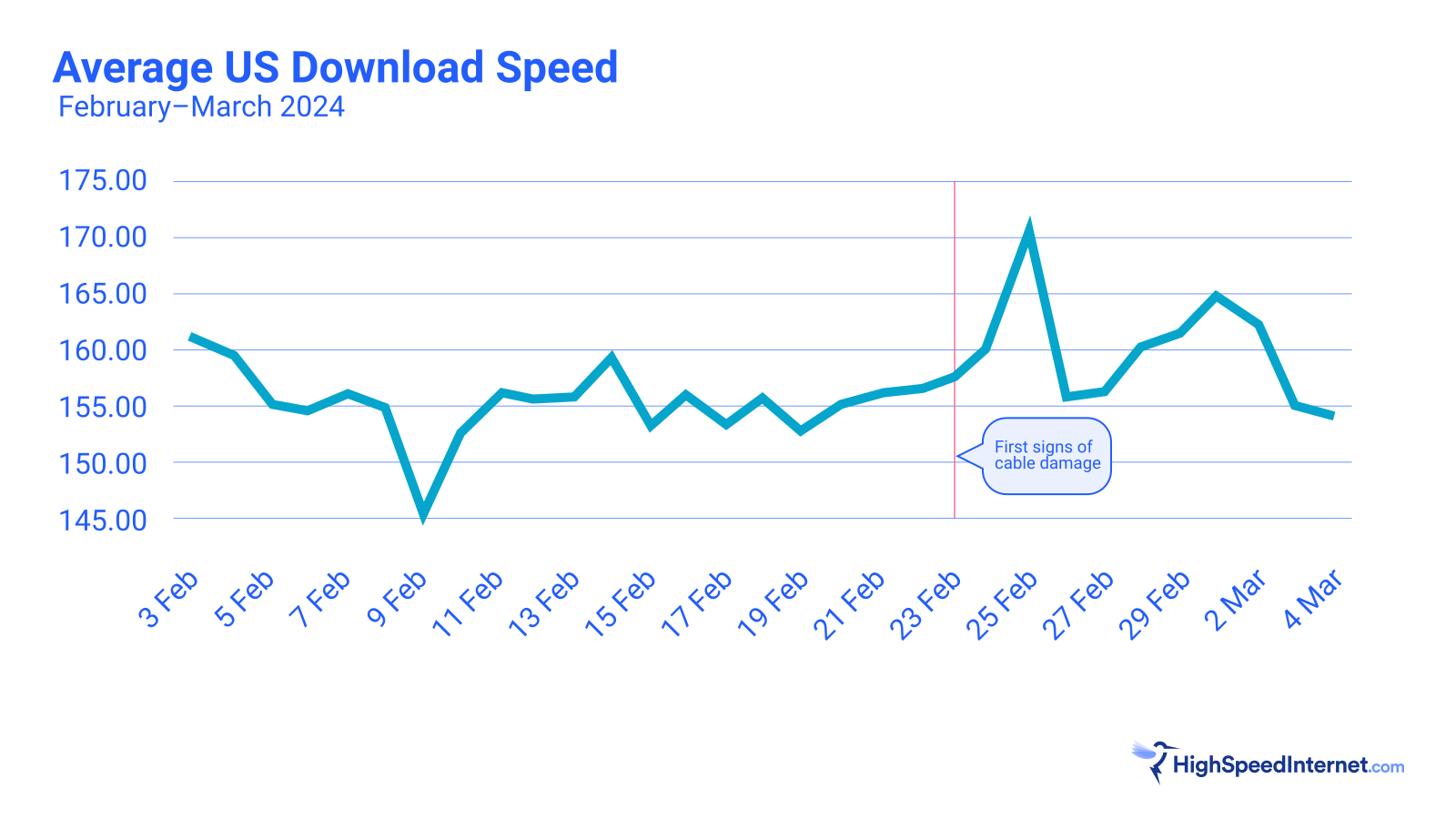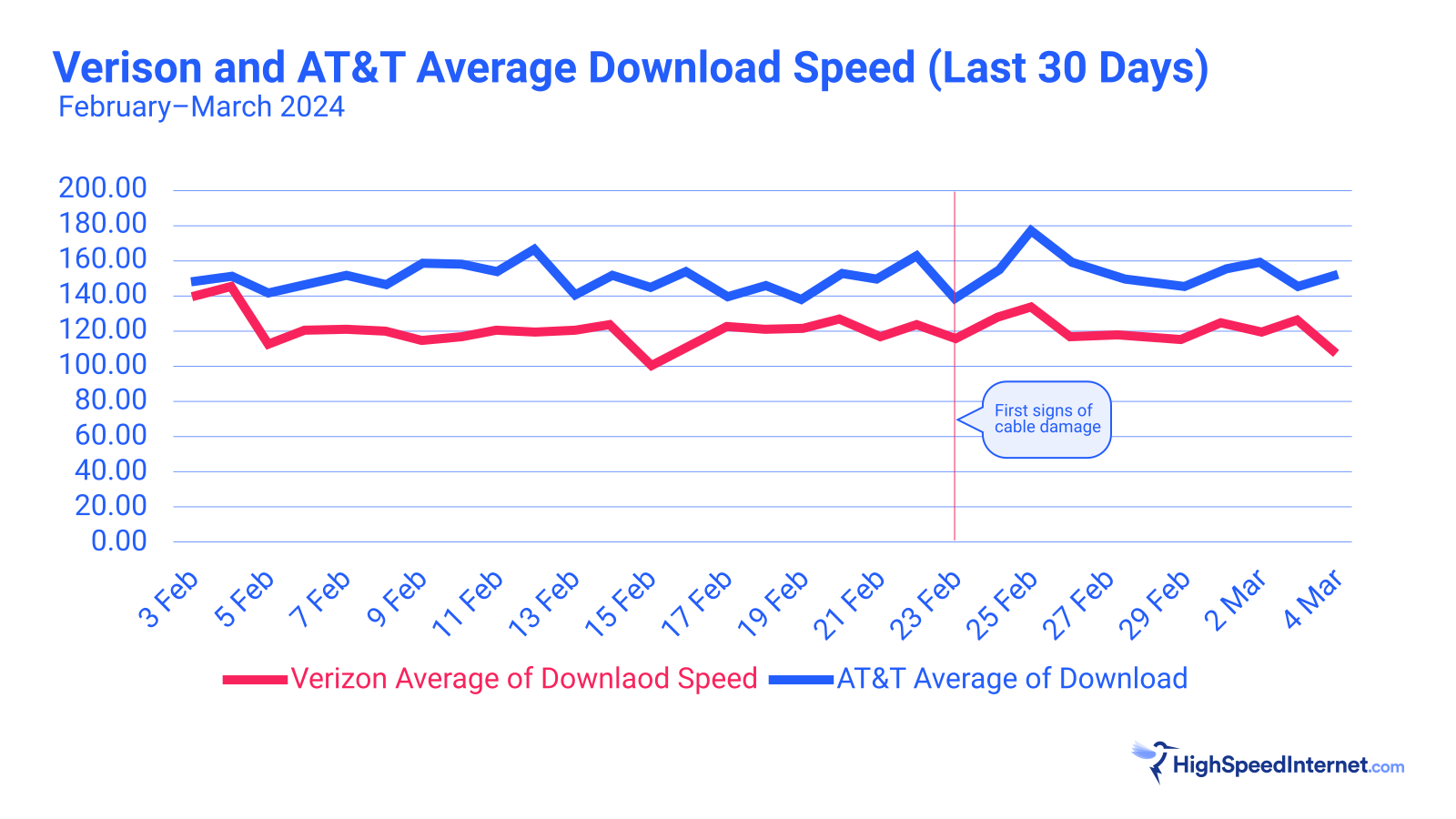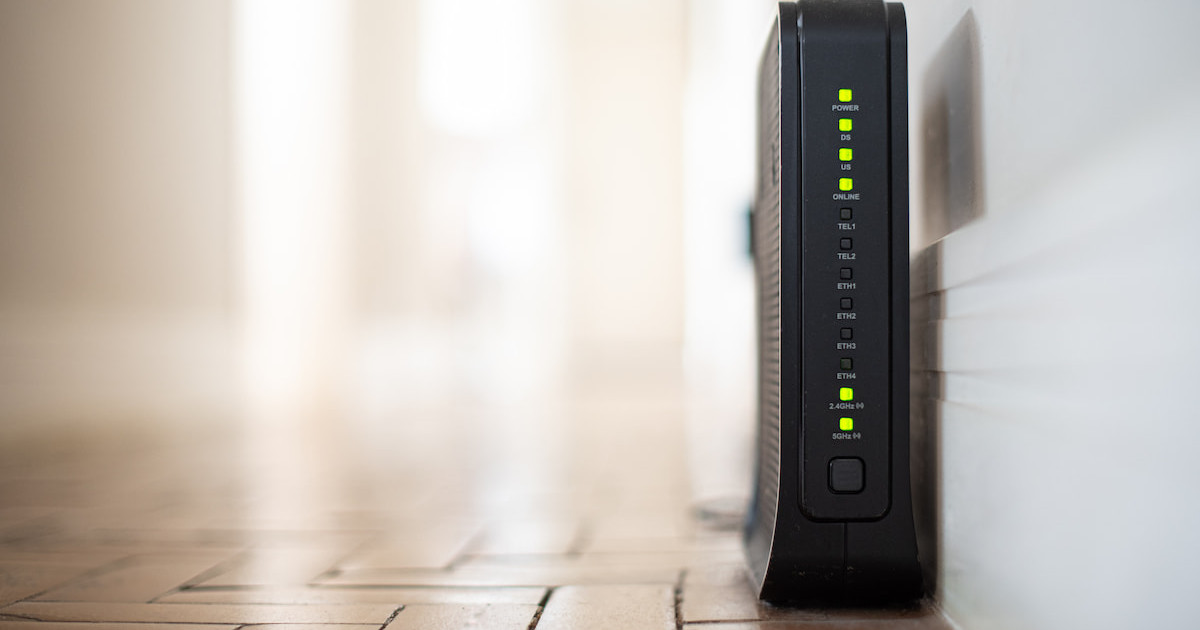Three Fiber-Optic Cables Were Cut in the Red Sea. Will It Slow down Your Internet?
Can network damage across the globe affect the US, and who (or what) cut the cables?
Mar 8, 2024 | Share
News, Technology
Damage to three undersea fiber cables in the Red Sea has forced internet providers to reroute a massive amount of data traffic. An estimated 90% of all internet traffic between Europe, Asia, and the Middle East travels via 14 submarine cables in the Red Sea. HGC Global, a Hong Kong ISP affected by the damage, estimates that 25% of internet traffic passing under the Red Sea has been impeded.
The cut lines include the Asia Africa Europe-1 (AAE-1), Europe India Gateway (EIG), and the SEACOM/Tata TGN-Eurasia. We’ll get into the most likely causes of the damage, but first, let’s find out what this means for U.S. internet customers.
Did the Red Sea cable damage affect US providers?
While cable damage in the Middle East may seem like a faraway problem, when key parts of the global internet network go down, there’s potential for far-reaching repercussions. Network operators are excellent at building redundant networks that automatically divert traffic, but those detours could conceivably cause congestion as unusual stresses are applied to the network lines serving as the alternative routes.
For example, on Monday, March 4, HGC announced it was rerouting some of its European-destined traffic through the U.S., and several other affected providers stated they’re using similar strategies to mitigate the damage.
So we know some of the slack caused by the cable damage in the Red Sea was picked up by U.S. fiber lines, but was the impact enough to cause any disruptions here at home? We turned to our speed test data to find out.
The lines were probably cut on February 23, at around 11:30 p.m. (MST). That’s when IODA detected signs the Seacom cable went down. Damage on the 23rd also syncs with reported outages from Kenya to Egypt on the same day, as well as disruptions in Djibouti reported by network tracker, NetBlocks. The local time of the event took place on the morning of February 24, but our data is set to MST, so we’ll use that reference.

Overall average speeds in the US appear to be unaffected by the Red Sea cable damage.
* Data sourced from HighSpeedInternet.com speed test on 3/5/2024. Data may include wireless and business connections and is not necessarily indicative of residential speeds.
Looking at HighSpeedInternet.com speed test data shows no significant drops in average download speed anywhere near the 24th, but the above chart shows all data from all providers. It turns out that some ISPs could have been affected more than others.
Of the damaged cables, one in particular, the Europe India Gateway (EIG), is perhaps the most significant for U.S. internet, as it’s owned by a consortium of ISPs that includes AT&T and Verizon.
We zeroed in on AT&T and Verizon speed test data surrounding the suspected date for any indications of slowdowns. We saw a dip on AT&T’s network February 23, as the average speed test result dropped by more than 20Mbps. That’s not an insignificant drop, but it’s far from conclusive. We saw a similar speed drop on February 13th. These fluctuations don’t happen every day, but a few times a month is normal. We saw no significant drop in speeds on Verizon’s network during the Red Sea incident’s time frame.

AT&T’s network shows a minor dip in average download speed on the day the cables were cut.
* Data sourced from HighSpeedInternet.com speed test on 3/5/2024. Data may include wireless and business connections and is not necessarily indicative of residential speeds.
If AT&T’s brief speed drop was due to internet traffic rerouted from the Red Sea, our data suggests it was quickly remedied. AT&T’s average speeds shot up to 176Mbps a few days later, its highest average speed in February.
Effects on internet in the U.S.
Final call: We can’t say we picked up any strong indications that AT&T, Verizon, or any other U.S. ISP was adversely affected from the severed cables. Internet speeds don’t appear to be doing anything strange since the incident either. The U.S. web is humming along, and there’s no reason to suspect that will change due to the cut lines in the Red Sea. But, it may be a different story for areas more reliant on Red Sea data cables.
What damaged the cables?
Initial reports suspected the damage may have been caused by Yemen Houthis, who have been attacking ships in the area. Yemen’s internationally recognized government in exile warned earlier that the Houthis could target the vital undersea cables. The Houthis have denied the allegation, and it’s unknown whether or not the group even has the means to directly attack the deep-laying submarine cables, but they could have been indirectly involved.
On February 18, around 11 p.m., two Houthi anti-ship missiles struck the Rubymar bulk carrier ship, tearing into its engine room and starboard side. Over the next three hours, the crew attempted to get the ship to safety, but the situation only got worse.
Two other ships passed without rendering aid. When the crew saw a third missile crash into the sea, barely missing the ship, the captain turned off the ship’s location broadcasting device, and the crew dropped anchor. Then, they discovered the ship’s damage and subsequent flooding was even more severe than initially thought—it was going to sink. The crew abandoned the ship in a lifeboat and was later rescued.
Meanwhile, the unmanned Rubymar started drifting north in the same general area where the cables are thought to have been damaged, with its massive anchor scraping the seabed beneath its wake.
Ship anchors and undersea cables don’t mix. In fact, contact with dragging ship anchors is the second most common cause of submarine cable damage, according to telecom market research company Telegeography. For nearly two weeks, the Rubymar stubbornly drifted over 70 kilometers in the Red Sea before it finally succumbed to its flooding and sank on March 2nd. That’s a lot of time and ground covered in a narrow sea packed full of submarine cables.
At least one of the cable operators suspect a ship anchor may be to blame. “Our team thinks it is plausible that it could have been affected by anchor dragging, due to the amount of marine traffic the region deals with and the low seabed in many parts of the Red Sea,” said Seacom, a joint operator of the Seacom/Tata cable.
We won’t know for sure until someone takes a look. Due to the obvious instability and danger posed to maritime activity in the region, that could be a month or longer from now.
Author - Austin Aguirre
Austin worked as a broadband technician installing and troubleshooting countless home internet networks for some of the largest ISPs in the U.S. He became a freelance writer in 2020 specializing in software guides. After graduating with a BS in technical communication from Arizona State University, he joined the team at HighSpeedInternet.com where he focuses on home network improvement and troubleshooting.




